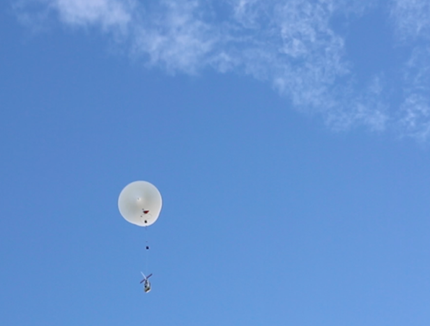Article and Figures Provided By: Colm Sweeney and Bianca Baier
Oceanic and Atmospheric Research (OAR)/Global Monitoring Laboratory (GML)
Principal Investigator: Colm Sweeney
Co-Investigator: Bianca Baier
NOAA’s Global Monitoring Laboratory (GML) has transformed high-altitude greenhouse gas sampling in the past decade with the AirCore balloon-borne sampler that collects air from the stratosphere (~95,000 ft Mean Sea Level (MSL) to the earth’s surface, analogous to an ice “core.” A typical AirCore flight is facilitated by a balloon-based ascent to 95,000 ft MSL, followed by balloon cutaway and parachute recovery to the ground. Because the AirCore and its accompanying scientific payload – facilitated by small balloon technology – enables atmospheric sampling at altitudes higher than most aircraft measurement systems, this novel technique is an effective method for sampling trace gases such as carbon dioxide, methane, carbon monoxide and other meteorological state variables (temperature, relative humidity, pressure) in more than 98 percent of the earth’s atmosphere at a fraction of the cost of aircraft systems.
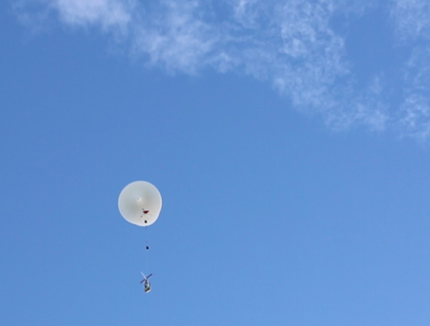
Unlike typical weather balloon payloads that are designed for one-time use, the AirCore must be quickly recovered upon landing for laboratory analysis of the air sample. This requirement greatly limits air sampling locations due to feasibility of the payload recovery. To expand sampling locations and increase recoverability of the AirCore system NOAA GML has dedicated the past two years to developing the High-altitude Operational Return Unmanned System (HORUS) in collaboration with the NOAA Uncrewed Systems Research Transition Office (USRTO), Arizona State University aerospace engineers, and Delta Zee Solutions, LLC engineering and design. The basic flight principles of the HORUS fixed-wing glider will incorporate a balloon launch and ascent of the HORUS carrying the AirCore and scientific instrumentation, balloon cutaway at 95,000 ft MSL, controlled descent via autopilot to a predetermined landing location and finally a parachute deployment for soft landing (Figure 2). This project is in support of NOAA’s overall mission to understand and predict weather and climate variability and change, and specifically addresses NOAA GML’s mission to monitor changes in greenhouse and other trace gases on decadal to centennial timescales. This project is funded by the NOAA USRTO.
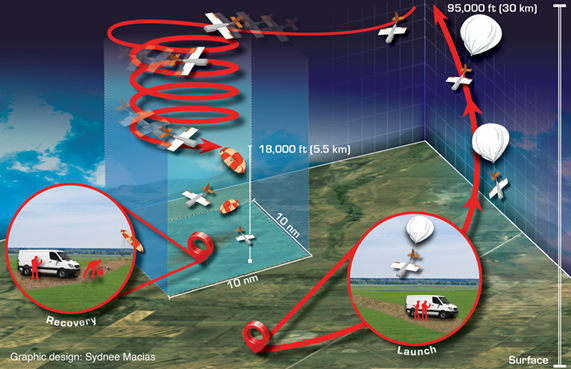

The portable, 6-foot wingspan HORUS (Figure 3) underwent successful testing under a battery-powered propeller at low altitude for autopilot tuning and testing of its parachute deployment system in early 2020. Following these low-altitude tests, it was also necessary to test the HORUS in its typical operating environment: that is, at high altitudes where low temperatures and air densities can present issues for control surface functionality and electronics performance.
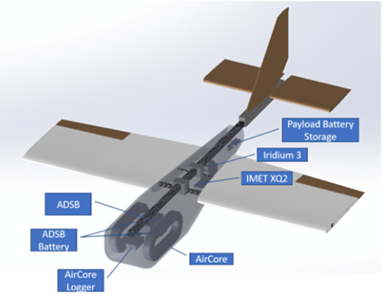

During May 2020 in coordination with Edge of Space Sciences, and alongside a Federal Aviation Administration (FAA) certificate of authorization for a balloon flight with a slightly heavier payload, the HORUS fuselage – filled with its full scientific payload – was flown on a 3000 g balloon to ~92,000 ft MSL and underwent a parachute-based descent (Figure 1). The NOAA GML team tested operability of HORUS control surfaces and electronics systems functionality for its full expected altitude profile. Figure 4 indicates the altitude profile for this test and corresponding atmospheric temperature and pressure. Here, we note that temperatures in the stratosphere routinely dip below -50o Celsius (-58o Fahrenheit), and minimum pressures reached are ~10-20 millibars. During flight, the HORUS servos and control surfaces were continuously moved and the temperature and functionality of electronics and components shown in Figure 3 within the HORUS fuselage were monitored (Figure 5). Functionality was reviewed for all systems post-flight through autopilot flight logs, data logs and video footage indicating optimal performance.
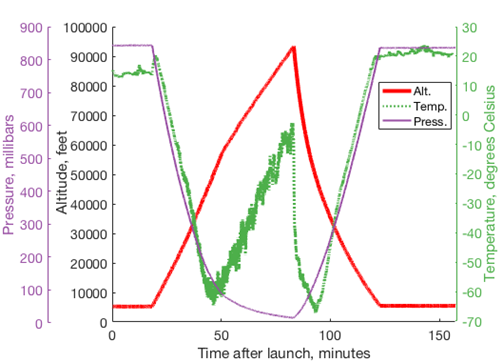

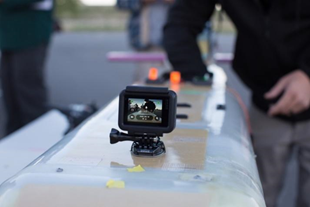

Since then, the NOAA GML HORUS has passed airworthiness review with NASA’s Armstrong Flight Research Center (AFRC) and Edwards Air Force Base (EAFB), and will undergo flight testing in EAFB restricted airspace in California during 2021. EAFB HORUS test flights will involve the execution of several different flight profiles and patterns, beginning with low altitude (<10,000 ft MSL) balloon flights and autopiloted return to landing, and ending with a full flight profile to 95,000 ft MSL with autopiloted return to landing. These flights are meant to verify the functionality of the Uncrewed Aircraft System as well as calculated flight characteristics and, pending FAA acceptance for flight in unrestricted airspace, will bring the platform one step closer to future operational use by NOAA.
With a large-volume payload capacity and controlled recovery of high-accuracy atmospheric instrumentation, routine HORUS flights from the surface to the stratosphere have the potential to revolutionize high-altitude atmospheric sampling from both land and at sea. Furthermore, because weather balloons operate without expectation of recovery, in situ instrumentation is limited in cost and quality. The HORUS has the potential to recover high-quality, high-accuracy sensors, thereby providing enhanced atmospheric measurement capabilities from the surface to the stratosphere.

